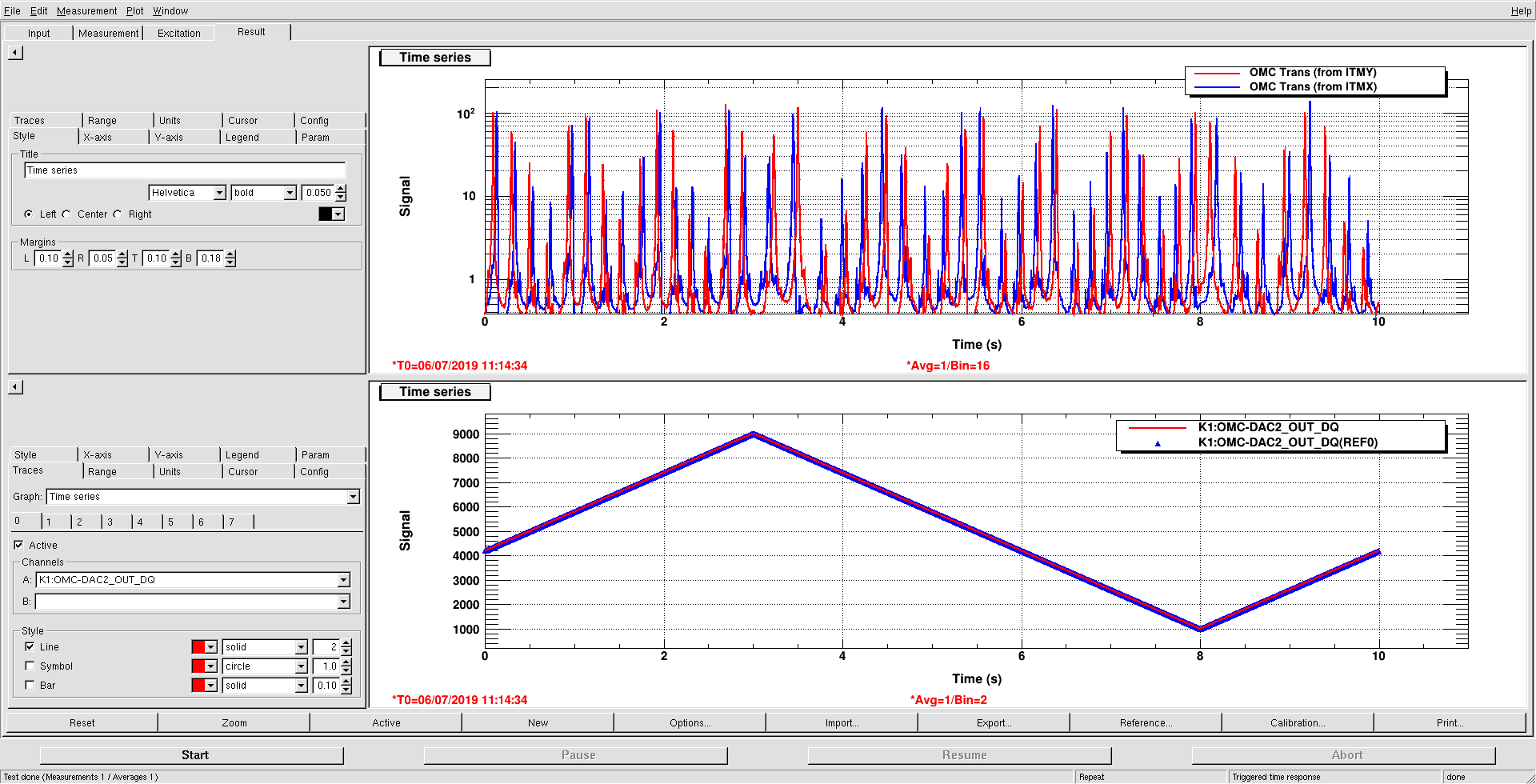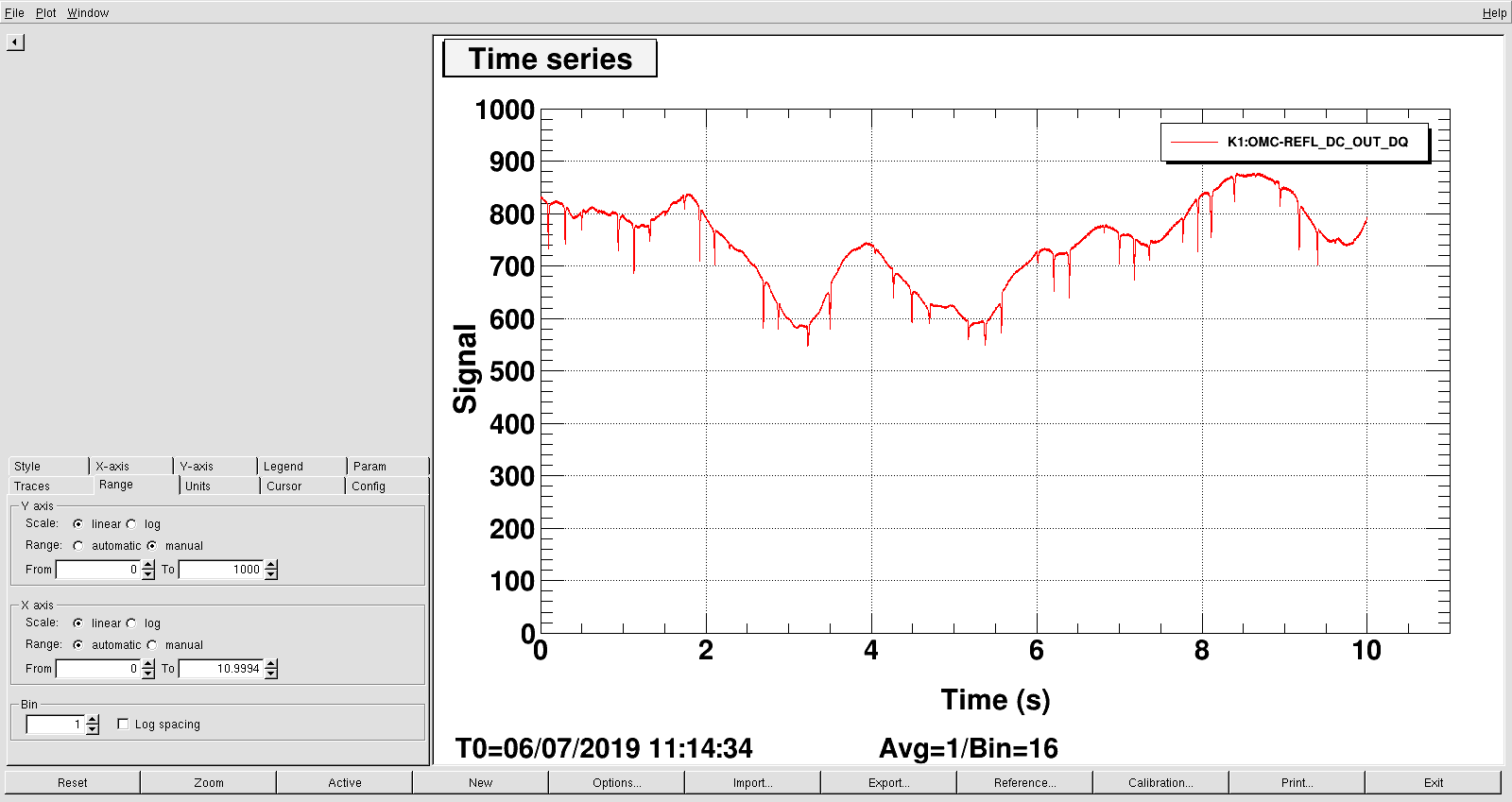Valera, Keiko, Yutaro
We performed the cavity scan of OMC with OMC REFL PD online.
In summary, we found two things:
1. There are so many higher order modes within one FSR. Sum of the power of those modes almost reaches 100% of the input power, indicating that the impedence matching condition of OMC is more or less OK.
2. The HOM distribution of the beam from ITMX and ITMY looked quite similar. There should be some common source of the distortion of the beam.
= What we did =
- aligned the beam to OMC, by maximizing the transmission power. Eventually we reached the alignment where the beam was hitting on the center of both OMC QPDs.
- (However, good alignment in terms of the build-up resulted in clipped REFL.)
- First we scanned OMC length with the beam from ITMX. P2P amplitude of the scan was 2 FSRs.
- Second we did the same for the beam from ITMY.
= Results =
- Transmission. Two FSRs in 5 sec. They looked very similar.

- Reflection PD. At maximum, the reflection power dropped by ~10%, which is consistent with the fact that the transmission is 10 % at maximum. This indicates that there is no significant loss inside the cavity.


